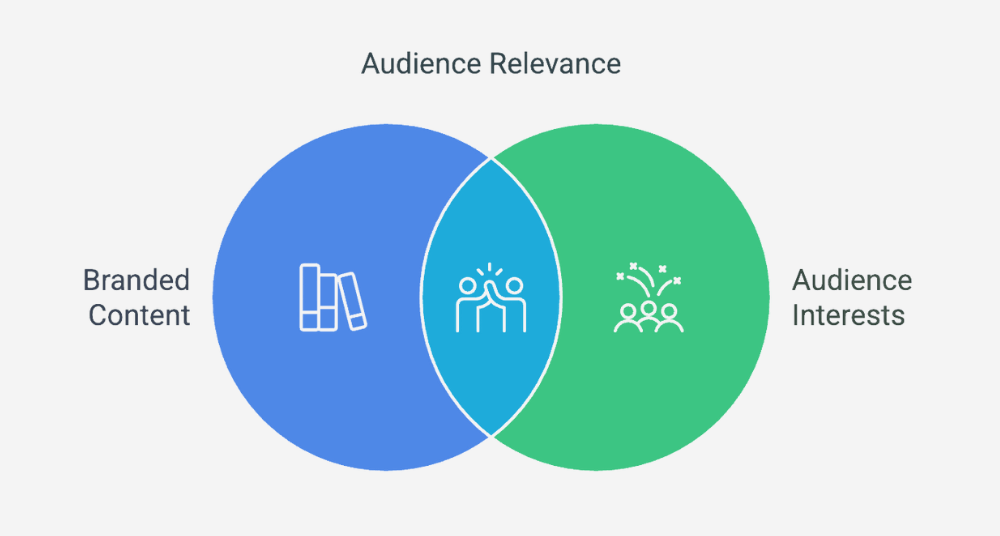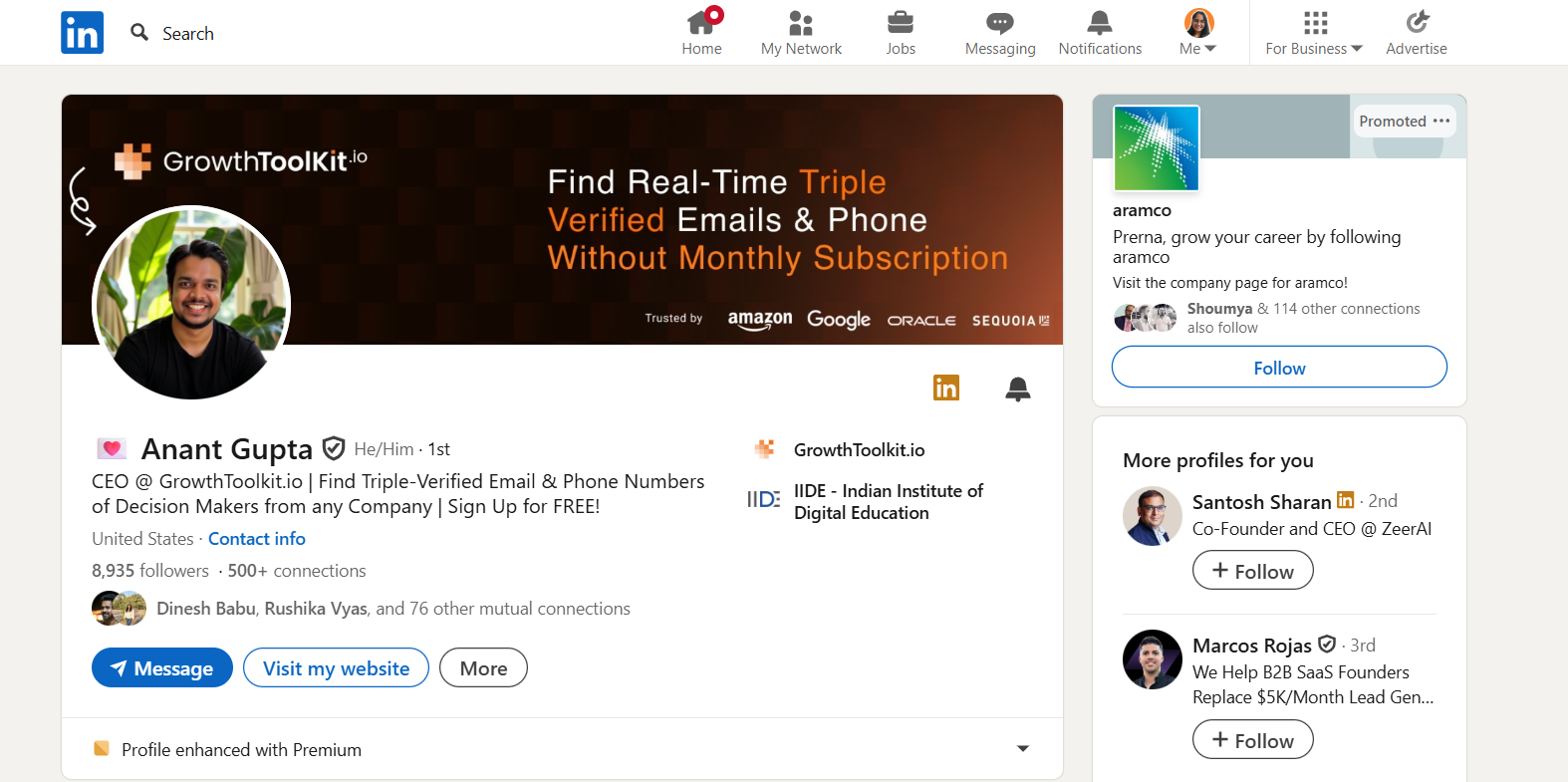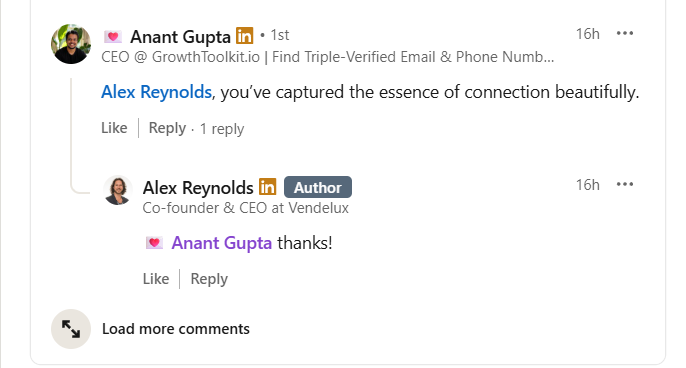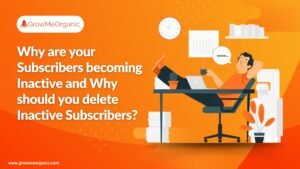It’s 2025. Posting daily on LinkedIn doesn’t guarantee pipeline, and replying to comments won’t close your quota.
And if your DM strategy still starts with “Hey, quick question…” – you’re not social selling. You’re blending in.

Because social platforms aren’t just noisier, they’re smarter.
Algorithms prioritize relevance. Buyers scroll faster, trust slower, and only engage when something that actually feels useful. They don’t want content that talks at them. They want context that resonates with them.

That’s why this isn’t another blog about “how to get 1,000 likes.”
This is a tactical playbook for modern B2B sellers — SDRs, founders, solopreneurs, and marketers who don’t just want followers… they want qualified conversations.
Inside, you’ll learn how to build trust in comment sections, turn content into credibility, and make social media your strongest lead generation channel without selling like it’s 2015.
Let’s rebuild your outreach with signal, not noise.
Your Prospects Are Still Online — Just Not Where You’re Pitching
No one logs into LinkedIn to get pitched.
They log in to stay sharp. To see what peers are doing. To follow industry shifts. Maybe even to scout talent, tools, or trends, but not to answer a cold DM that says,
“Hey, saw we’re in the same space. Want to connect?”
The truth is:
Your prospects are still online. They’re just not paying attention in the way you think they are.
📌DMs Aren’t Dead — But They’re Not Your First Impression
Sending cold DMs without showing up publicly is like asking for a favor from a stranger at a networking event… after standing in the corner all night.
It’s not that outreach is the problem; it’s that context is missing.
In 2025, credibility doesn’t start in the inbox. It begins in the comments section.
The sales reps, marketers, and founders who consistently show up with insights, not links, build passive familiarity. That’s what earns the green light on your DM later.

Signal-first rule: “Don’t message before you’ve been seen.”
When they’ve seen your name pop up 3–4 times under posts they already care about, your message isn’t cold. It’s contextual.
You’re not a pitch. You’re a familiar face.
📌Why Traditional LinkedIn Outreach Falls Flat
Let’s be blunt:
Sending 100 connection requests a day with the same templated intro isn’t “social selling.”
It’s automated spam.
Buyers can spot a spray-and-pray from a mile away, especially on platforms where thoughtful people post, engage, and build a reputation.
If your profile is inactive, your comments are nonexistent, and your only activity is mass DMs, you’re not doing outreach. You’re running interruption ads with your face on them.
📌The New Funnel: Warm Impressions → Curious Clicks → High-Intent Replies
Your new top-of-funnel looks like this:
✅They see you comment on a post they already trust
✅They notice your profile feels thoughtful, not salesy
✅Your DM feels earned, not forced.
✅Your response rate doubles because you led with value.
This is what social selling actually looks like now:
Micro-familiarity that compounds.
You’re not just showing up once and hoping they bite; you’re gradually becoming the person they expect to hear from.
Most reps still think content is king.
In reality? Comments are currency.
👉A sharp comment on a prospect’s post builds more trust than 10 cold DMs.
👉Engaging consistently under industry leaders’ posts creates invisible authority.
👉Even 15 minutes a day of strategic commenting beats a week of automated outreach.
You’re not just prospecting anymore.
You’re pre-framing your future pitch, without even selling yet.
The Trust Layer: Why Familiarity Beats Funnel Logic
👉You don’t get replies because you’re clever.
✅You get replies because you’re familiar.
That’s the shift.
Old playbooks ran on funnels: Awareness → Interest → Action.
Modern playbooks run on one principle: Familiarity before pitch.
In 2025, buyers reply to people they already recognize, even if only vaguely.
The inbox is no longer the first impression.
It’s the second. The follow-up. The confirmation.
And if you’re not building that trust layer in public, your outreach in private is already underperforming.
🔸Why “Awareness > Pitch” Is the New Sequence
Let’s be real — people don’t just cold reply anymore. They recognize, then reply.
Every smart outbound campaign starts before the first email is sent:
⚡A profile view
⚡A comment on their post
⚡A DM that feels like a reply, not a pitch
The right touch, in the right order, builds a signal before the ask.
🔸Building a Recognizable Voice Before You Hit Send
GrowMeOrganic users who outperform others don’t just scrape leads and launch sequences.
They stage familiarity.
Here’s how:
✅They warm up intent-rich leads from GrowMeOrganic’s B2B contact database.
✅They layer signals like job changes, recent funding, or tech installs.
✅They engage before outreach, not just during
So when the message lands, the name looks familiar. That’s trust before text.
🔸How Buyers Vet You Before They Reply
Every buyer does this:
- They see your email or DM
- They check your LinkedIn.
- They judge your headline, content, tone, and track record.
👌No presence? No reply.
👌No content? No trust.
👌No social proof? No chance.
They don’t just read what you wrote.
They scan who you are.
“Trust isn’t built in the inbox — it’s built before you ever show up there.”
That’s the shift most senders miss.
Cold outreach doesn’t begin with a subject line.
It begins with recognition. Familiarity. Quiet signals that say: “I know who this is.”
And that’s where GrowMeOrganic quietly takes over, powering your outbound with context long before the first email.
Here’s how to set up a trust-first motion inside GrowMeOrganic:
- Find the right people, already engaged in your space
Use the LinkedIn Email Extractor to identify active ICPs — folks liking posts, commenting on competitors, or hiring for growth roles. - Send cold campaigns that land warm.
When your email finally hits, it’s not a stranger in their inbox — it’s a name they recognize, tied to value they already noticed.
It’s not just about deliverability or enrichment.
It’s about building recognition, familiarity, and context at every stage of the buyer journey.
Instead of blasting cold emails and hoping for interest, you warm up your intent with:
✔️ Smart sequencing
✔️ Real-time enrichment
✔️ Automated trust loops
So when your message finally lands, it doesn’t feel cold — it feels expected.
If you’re still skipping warm-up steps in 2025, you’re not invisible — you’re forgettable.
And in a noisy inbox, familiarity is your first competitive edge.
No One Buys in DMs — They Buy from DMs
Here’s the brutal truth:
Nobody’s closing five-figure deals in their DMs.
But —
Deals do start there.
That means your DMs shouldn’t sound like contracts.
They should sound like conversations.
👉The DM Is a Signal — Not the Sale
Sending a cold DM in 2025 is like knocking on someone’s digital front door.
If your first message says:
“Hey {{firstName}}, I help founders 3x their pipeline with AI-driven lead engines…”
You’re not starting a conversation.
👉You’re triggering a reflexive “no.”
Buyers don’t buy because of your message.
They buy because of the experience leading up to it.
The content they’ve seen. The comment you left. The tone you use.
Your DM is the permission slip for a conversation, not the conversation itself.
🎯The 3-Step DM Strategy: Curiosity → Context → Conversion
Most reps fire cold intros like this:
“Hey! Can I steal 15 minutes of your time next week?”
That’s not a strategy. That’s asking for effort without building intrigue.
Here’s what works better:
✅Curiosity — Show you’re not a bot.
“Saw you just launched something new — congrats! Quick Question about it…”
✅Context — Anchor the ask.
“I’ve been building something similar for B2B creators — curious if this resonates.”
✅Conversion — Keep it soft.
“Happy to send over a 30-sec walkthrough if helpful. No pressure.”
The best DMs don’t feel like DMs.
They feel like thoughtful nudges from someone who did their homework.
🎯Real Message Templates That Start Conversations
Here are 3 DM formats that earn replies, not rejections:
📌The “Comment Callback”
“Saw your take on hiring GTM teams in your last post. Curious if you’ve tested X strategy?”
Why it works: You’re not selling. You’re showing up informed.
📌The “Quiet Value Drop”
“We just ran a 2-week experiment with outbound + dark social. Results were wild. Want a quick breakdown?”
Why it works: Offers value without asking anything upfront.
📌The “Signal Over Sell”
“You’re probably good on [problem], but just in case it’s still on the radar — happy to share a quick teardown.”
Why it works: Acknowledges their awareness, doesn’t assume pain.
🎯Patterns That Trigger the Mute Button:
👉Openers that feel recycled
(“Hope you’re doing well” isn’t personal — it’s filler.)
👉Too much, too fast
5-line intros that pitch before you’ve earned curiosity.
👉Aggressive follow-ups
“Just following up again…” screams desperation, not relevance.
DMs That Work Start With Context, Not Calendars
🎯When to Follow Up (and When to Vanish)
- If they’ve engaged with your profile? Light bump after 3 days.
- No reply + no profile view? Let it go. Focus elsewhere.
- Follow-ups should add signal, not pressure.
“Saw you recently posted about hiring SDRs — is top-of-funnel still a bottleneck?”
Your DM’s goal is not to schedule a call on the spot.
It’s to create just enough curiosity that the buyer wants to keep listening.
Because in social selling, the right conversation beats a dozen pitches.
Every single time.
Thought Leadership ≠ Thought Dumping
A hard truth: Most “thought leadership” posts don’t build trust.
They just build scroll fatigue.
Too many founders, reps, and marketers think showing up every day equals impact. But consistency without context isn’t credibility — it’s noise.
❌Posting volume ≠ trust
❌Posting daily won’t make your prospects trust you.
✅Posting deliberately will.
Your content isn’t about proving how much you know — it’s about making the reader feel like you understand what they’re facing.
Thought leadership is earned, not assumed.
And you don’t earn it by dumping opinions into a feed.
What Actually Works: High-Conversion Content Formats
If you want your posts to build warmth, familiarity, and credibility, focus on these proven formats:
✅Narrative Insights
> “Here’s what I got wrong about cold outreach in 2021 (and what finally worked in 2024).”
✅Mini-Playbooks
> “3 LinkedIn content prompts that booked 7 sales calls last month (with zero cold DMs).”
✅Comment Prompts
> “Curious: How many touchpoints do you actually use before pitching in DMs? I’ll share my flow below.”
These formats convert not because they’re flashy, but because they invite the reader into your brain. They share thinking, not just take.
Use the 70/20/10 Rule for Social Selling.
The best creators (and sellers) aren’t 100% tactical or 100% inspirational.
They balance value with vulnerability—frameworks with reflection.
Here’s a content mix that keeps people hooked:
🎯70%: Actionable insights
Things your ICP can apply right away.
Examples: strategy breakdowns, how-to frameworks, outreach teardown posts.
🎯20%: Personal brand & POV
Things that make your content you.
Examples: origin stories, lessons from failure, and behind-the-scenes of your process.
🎯10%: Direct asks / offers
Only when it feels earned.
Examples: “Opening 2 spots for 1:1 messaging audits — DM if you want feedback on your outbound.”
Think like a buyer, write like a friend, position like a strategist.
Profile Pages Are the New Landing Pages
Here’s the shift:
Your profile isn’t a resume. It’s a funnel.
When someone sees your content, their next move isn’t replying to your DM.
It’s clicking your name.
And what they find — or don’t—can decide whether they reply, trust, or bounce.
📌Treat Your Profile Like a Cold Traffic Funnel
You wouldn’t send paid traffic to a landing page without an offer, a headline, or proof, right?
Then don’t do it with your LinkedIn profile.
A high-performing profile should answer 3 silent questions in 10 seconds:
✅Who’s this person? (Positioning headline)
✅What do they do for people like me? (About/Bio section clarity)
✅Why should I trust them? (Content + proof + consistency)

It’s not about “optimizing your profile.”
It’s about removing friction between curiosity and conversion.
📌Headline > Job Title
Your headline is prime real estate — use it like a hook, not a placeholder.
❌Bad:
Marketing Manager at ABC Company
✅Better:
Helping B2B SaaS founders get 20+ warm leads/month — without cold DMs
Use your headline to speak to the reader, not about yourself.
📌Use Your Featured Section Like a CTA Stack
This is where conversions happen.
Examples of what to include:
✅Case study breakdown posts
✅Your lead magnet/resource
✅Book a call links (use warm copy — not “schedule a discovery call”)
Think of this as your mid-funnel content — anyone who makes it here is semi-warm. Don’t waste the click.
📌Social Proof That Doesn’t Feel Fake
Posting “client love” screenshots in a carousel is fine, but what works better?
✅Native, story-driven posts about results:
“We tested a 3-line DM with this founder. Booked 4 calls in 2 days. Here’s the message…”
✅Testimonials pinned in comment replies
Use past wins to reply to new content: “This worked for a founder I worked with — here’s proof.”
✅Context > logos
Saying “we worked with X brand” is okay.
Saying “we helped X go from 2 replies a week to 12 qualified meetings/month in 6 weeks” is conversion fuel.
Make it frictionless.
Make it relevant.
Make it about them, not just you.
The Comment Section Is the New Cold Email
🔸Public > Private (At First)
Here’s the new rule of modern outbound:
Before you land in the inbox, you should show up in their comments.
Why?
Because attention is earned before the pitch.

And people notice who engages with their content, especially when it’s insightful, not salesy.
🔸Comment Tactics That Attract Leads (Without Being That Guy)
✅DO:
- Add insight, not noise
“We saw similar results when switching to async onboarding — reply rates doubled. Curious if you saw the same?” - Tag with intent
“@Name, this reminded me of your question last week.” - Keep it native
Don’t plug your offer. Add value in the comments.
❌DON’T:
- Say “great post” and vanish
- Add fake praise with an irrelevant CTA.
- Treat comments as a DM sneak-in
🎯Comments → Connections → Conversions
Live Example: How a Comment Became a $12K Deal
You drop a comment under a Head of Marketing’s post on scaling paid ads:
“Loved this — we tested a similar split-budget strategy with a SaaS client last month. CTRs jumped 38% after we adjusted the creative rotation speed. Let me know if you want the breakdown.”
Here’s what happens next:
👉They like the comment.
👉They click your name.
👉They land on your profile (headline = clear, CTA = sharp).
👉You don’t rush.
Two days later, you DM:
“Saw you checked out the profile — thanks
We actually wrote up a teardown of that exact test for our internal swipe file. If it’s helpful, happy to send it over.”
No pitch. No pressure. Just a signal that you’re helpful before you’re hired.
✅They say yes. You send the teardown.
✅Three replies later?
✅They ask what it would look like to do this with their own funnel.
That’s the new flow:
Proof in public → Profile signal → Private value → Pipeline.
Before you pitch, position.
Outbound today starts in the feed, not the inbox.
Silent Signals: How to Track Buyer Intent Before They Follow You
Not every buyer hits “follow” before they’re ready to buy.
But that doesn’t mean they’re not watching.
In 2025, most of your warmest leads are still lurkers.
They’re viewing. Reading. Clicking.
They’re just not raising their hands — yet.
The question is:
Can you spot them before they’re obvious?
📌Behavior-Based Signals to Monitor
Here’s what smart sellers track:
✅Profile views (especially from company decision-makers)
✅Recurring post viewers (who never engage publicly)
✅“Likes” on comment threads you’re active in
✅DMs that start vague but reference your posts
✅Clicks on featured links (without connection requests)
These aren’t random touches.
These are curiosity breadcrumbs — and in social selling, they’re gold.
📌Not All Platforms = Same Intent
Different platforms = different buyer psychology.
Some scroll to learn. Others scroll to escape. And your job?
Match message tone with platform temperature.
Intent level: High
People are in “business” mode.
- Engagement = Curiosity about your expertise, product, or positioning
- Silent signals:
👉Profile views after long-form posts
👉Saves on carousel content
👉 Likes from industry peers without comment
Intent level: Medium-Low
People are browsing, not buying.
- Engagement = Brand tone, vibe fit, or soft brand curiosity
- Silent signals:
👉Quiet likes on old posts
👉Story views with no replies
👉DMs reacting to humor, culture, or aesthetics
Use case: Great for founder visibility, soft trust, and humanizing B2B brands.
🔸Twitter/X
Intent level: Variable
Short attention spans, but repeated views = real curiosity.
- Engagement = Thought leadership traction or contrarian takes
- Silent signals:
👉Likes from private lists
👉Clicks without follows
👉Quote tweets that tag you weeks later
🔸Quora / Reddit
Intent level: High
Users come with problems, not to be entertained.
- Engagement = Search-driven, bottom-funnel behavior
- Silent signals:
👉Upvotes from niche threads
👉DMs on Reddit
👉Comment saves or repeated question views
Use case: Build deep authority. Reference these threads in DMs or cold emails for context.
🔸YouTube
Intent level: Medium
Great for long-form education, product breakdowns, or use-case explainers.
- Engagement = Viewer retention + comments = buyer warmth
- Silent signals:
👉Watch-time > likes
👉Rewatches on solution-oriented videos
👉Comments that ask for next steps
Use case: Link in your warm emails to push awareness → action.
Intent level: Planning mode
People pin before they buy.
- Engagement = Moodboarding, idea collection, or future decision intent
- Silent signals:
👉Pin saves without clicks
👉Re-pins across boards
👉Search terms that align with future pain points
Use case: Great for visual B2B use cases or infographics. Track pins → retarget later.
🔸WhatsApp / Telegram
Intent level: Personal
Private space = high-trust zone.
- Engagement = Direct conversations, high-res signal.
- Silent signals:
👉Silent story views (for business WhatsApp)
👉Seen-no-reply behaviors
👉Group re-forwards or comments on screenshots
Use case: Treat with care. Follow-ups work better when based on relevance, not pressure.
Not every like = interest.
Not every DM = readiness.
Track behavior + context → not just reach.
Smart sellers don’t broadcast blindly — they watch how people signal silently, then respond with timing that feels like instinct.
📌Reverse-Engineer Curiosity into Conversation
Silent signals are your invisible pipeline — but they only convert when you respond like a human, not a bot.
Here’s how to turn soft attention into warm conversations:
✅“Saw you checked out my profile — happy to connect if you’re exploring [relevant topic]!”
✅“Noticed you liked the post on [pain point] — would love to hear how you’re solving that right now.”
✅“Appreciate the follow — curious if anything in the [mini-guide/blog/thread] resonated?”
You’re not pitching.
You’re validating the intent they already signaled — subtly.
📌Engagement Triggers That Scream “I’m Getting Warmer”
If you spot any of these, it’s go time:
✅Liked 2+ of your posts in a week
✅Viewed your profile 3 times in 10 days
✅Reacted to a story + clicked a link
✅Commented on a mutual post + visited your featured link
✅Opened a DM or email, but didn’t reply
They may not say “I’m ready” — but their behavior already has.
Intent doesn’t always knock.
Sometimes it just scrolls quietly.
Your job isn’t to chase.
Your job is to notice, then signal back.
Post-Connect Warm-Up Loops That Don’t Feel Like Lead Nurture
Not every lead wants a pitch right after they accept your connection.
In fact, if that’s your move, you’ve already lost the reply.
The real game?
Warm-up loops that build context before the CTA ever drops.
🔸Slow Build → Fast Replies
When you connect with someone on LinkedIn or follow them on Twitter/X/you’ve opened the door.
But you haven’t been invited in yet.
This is where most reps blow it.
They confuse a green light with a sales signal.
Reality:
👉You don’t have permission yet.
👉You have proximity.
That means your next few moves aren’t about pushing value.
They’re about proving you’re worth the attention.
🔸How to Make Interactions Feel Organic Over Time
It starts with what we call “Soft Touches” — micro-engagements that add value without asking for anything:
- A thoughtful comment on their post
- A quick DM appreciating their insights
- Tagging them in something relevant to their role or industry
- Dropping a resource that aligns with their recent challenge — no strings attached
These actions signal you’re tuned in, not just targeting.
And the magic happens when this warm-up loop mirrors a real relationship.
It’s not fake rapport.
It’s respect → resonance → relevance → reply.
🔸Content Mapping to Relationship Stages
Your posts should match where they are in the journey:
| Stage | What They See | What You Post |
| Just Connected | Profile headline, featured content | Authority-building intro post or pinned asset |
| Lurking | Comments, recent content | Case studies, “what we’re seeing” posts |
| Soft Engaged | Likes, occasional replies | Behind-the-scenes insights, “why this worked” mini breakdowns |
| Ready to Talk | Clicking links, replying to DMs | Soft CTA with value (e.g. “Want me to break this down for you?”) |
This mapping creates rhythm, not randomness.
And rhythm builds response.
How GrowMeOrganic Powers Warm-Up Loops That Actually Work
Warming up leads in 2025 isn’t just about staying visible.
It’s about building trust before your first ask, without adding chaos to your outbound system.
That’s where GrowMeOrganic’s warm-up engine gives you a serious edge.
✅Create Intent-Based Warm-Up Sequences (Without Manual Tagging)
Inside GrowMeOrganic, you can segment leads by signals like:
👉Job change
👉Industry match
👉Funding raised
👉Past engagement or opens.
Once leads are tagged, build soft-touch campaigns with no hard CTA. Think:
- Email 1 → Insight-only email
- Email 2 → Thought-leadership article + soft POV
- Email 3 → “Not selling — just sharing this” tone
- Email 4 → Contextual CTA based on segment
All scheduled. All automated.
✅Warm the Inbox, Not Just the Lead
Before sending any campaign, GrowMeOrganic’s built-in email warm-up tool gradually ramps your sending volume, mimics human behavior, and maintains high deliverability.
This protects your sender score and keeps your emails out of spam, especially in critical early campaigns.
It also syncs seamlessly with your cold email engine, so warm-up and outreach never feel disconnected.
✅Plug Into Signals, Not Just Schedules
Using webhooks and behavior triggers, GrowMeOrganic allows you to:
👉Send warm emails when prospects open key resources
👉Add delay rules to avoid back-to-back touchpoints.
👉Enrich new data mid-campaign without breaking flow.w
So instead of blasting static sequences, you send messages that feel relevant and timed, not automated and abrupt.
Whether you’re prepping for a major campaign or warming up a fresh domain, GrowMeOrganic keeps you visible, trustworthy, and ready to convert — without jumping straight to the pitch.
Because real warm-up isn’t a checkbox.
It’s a strategy.
Mistakes That Kill Deals Before the First Message Is Sent
The cold DM didn’t fail because your copy was bad.
It failed 3 steps earlier — before the prospect even got the message.
Here’s how most people sabotage trust before they ever hit send:
❌Mistake #1: Over-Automating What Should Be Manual
Using tools to spray DMs, bulk-connect, or auto-comment might feel productive.
But it makes you look like a bot, and bots don’t build relationships.
Prospects can smell automation.
They see it in unnatural phrasing, irrelevant intros, and timing that feels… off.
Fix it:
👉Use tools for tracking, not for talking.
👉Personalize the first touch manually. It sets the tone.
👉If you must automate, use it post-context, not pre-context.
❌Mistake #2: Value Vomit — Posting to Look Smart, Not to Help
Ever seen a “how I scaled to $1M in 3 months” post with 17 emojis and no real insight?
Your buyers have too. And they scroll right past.
Posting every day doesn’t mean you’re building authority.
Posting clarity > posting quantity.
Fix it:
👉Show how you think, not just what you’ve done.
👉Share playbooks, not parables.
👉Make your audience the hero, not your offer.
❌Mistake #3: Connecting ≠ Prospecting
Not every new connection is a qualified lead.
And treating them like one (immediately) kills trust fast.
If you connect and pitch in the same breath? You’re noise.
If you connect, listen, then build context? You’re different.
Fix it:
👉Start with engagement, not CTA.
👉Use your feed to warm them up. Let them opt in to you.
👉Send a DM only when there’s a signal — a comment, a view, or a curiosity spike.
❌The Invisible Damage of Rushing
Here’s the real problem:
Even if the automation works, even if the DM lands —
The trust is already eroded. And trust isn’t something you recover easily.
It’s a sequence.
Sequence of intent.
Sequence of context.
Sequence of trust.
Get that right, and your first message won’t feel like an interruption — it’ll feel like the next step.
Attribution Is Messy — But Closing Isn’t
Not every lead will say:
“I found you through your comment on that post.”
Or,
“That LinkedIn carousel made me trust you.”
But they did.
And that’s what social selling actually is: invisible trust compounding in public.
📌Why Attribution Is Never Clean in Social Selling
Social selling is a multi-touch trust loop, not a one-click funnel.
By the time someone replies to your DM or books a call, they’ve likely:
👉Seen your profile 3–4 times
👉Liked a post (or just lurked)
👉Watched how you talk to others
👉Read a comment you dropped on someone else’s thread
And maybe — just maybe—clicked your link.
But will they say that? Rarely.
📌Track What Matters — Not Just What’s Easy
You can’t rely on UTM tags and first-touch attribution here.
So instead, track intent the smart way:
Social CRM Tracking Ideas:
✅ Use CRM tags like “LinkedIn engaged,” “commented twice,” “DM sent”
✅ Add link shorteners (Bit.ly, Rebrandly) to trace content clicks
✅ Keep intent notes — even on spreadsheets:
“Viewed my profile 3x in 7 days before replying”
📌Social Closes Feel Different
Your close won’t look like a funnel exit.
It’ll look like this:
“Hey, I’ve been seeing your posts lately. Quick question…”
Or:
“Loved that thread you shared — we’re actually trying something similar.”
It feels organic because it is.
Social trust isn’t.
Measure closes by context built, not just clicks captured.
Conclusion: Social Selling Is the New B2B Warm Call
In 2025, cold outreach doesn’t start with a pitch — it starts with presence.
Your buyers scroll before they speak, and trust before they talk.
Engage first. Teach clearly. Signal consistently.
Pick 2 tactics from this guide — implement them this week. The replies will follow.
Your signal is your first close.
FAQ’S
Q 1. What is social selling, and how does it work in 2025?
Social selling in 2025 is no longer about pitching in DMs. It’s about building trust in public before asking in private. It works by posting relevant content, engaging with your ideal buyers, and using soft-signal tracking (profile views, likes, comments) to move into conversation naturally, not forcefully.
Q 2. Is social selling only effective on LinkedIn?
No — but LinkedIn is where high-intent B2B buyers live. Social selling also works on Twitter (X), Instagram, and even Slack communities. The key is platform-context alignment: sell where your buyer learns and lurks, not just where you post.
Q 3. What’s the difference between social selling and traditional outbound?
Traditional outbound is interruption-based. Social selling is signal-based. Outbound asks cold. Social selling builds warmth before the ask through posts, comments, content, and credibility.
Q 4. How do I know if my social selling is working?
Track signal-based intent, not just DMs. Look for:
- Increased profile views
- Comments from target accounts
- Inbound DMs referencing your posts
- Connections who later reply to cold emails
Attribution is messy. Engagement is not.
Q 5. How do I avoid being salesy on social media?
Easy: don’t sell — serve.
Post mini-insights, share narrative lessons, write playbooks, ask questions, and show your work. Let your expertise earn curiosity, not push offers.
Q 6. Does social selling work for early-stage startups or solo founders?
Yes — in fact, it’s a superpower. When your ad budget is tight and credibility is low, your face becomes your funnel. Posting consistently builds pipeline you don’t have to pay for.
Q 7. How often should I post for social selling to work?
Consistency beats virality. Aim for:
- 3–4 high-signal posts per week
- Daily comment engagement
- 2–3 new strategic connections per day
It’s not about volume. It’s about visible relevance.
Q 8. Can I automate social selling?
You can automate the system, not the signals. Use tools to:
- Schedule posts
- Track profile views
- Segment leads
But keep your comments, DMs, and insights human. That’s where trust lives.
Q 9. What are the biggest mistakes to avoid in social selling?
- Treating it like email with emojis
- DM bombing strangers with pitch decks
- Only posting wins (vs. sharing lessons)
- Ignoring comments and engagement
- Sounding like ChatGPT instead of yourself
About Post Author
Anant Gupta
Growth Hacker, Marketing Automation Enthusiast & Founder of GrowMeOrganic







